Geometric Progression, Series & Sums
Introduction
A geometric sequence is a sequence such that any element after the first is obtained by multiplying the preceding element by a constant called the common ratio which is denoted by r. The common ratio (r) is obtained by dividing any term by the preceding term, i.e.,
![]()
| where | r | common ratio |
| a1 | first term | |
| a2 | second term | |
| a3 | third term | |
| an-1 | the term before the n th term | |
| an | the n th term |
The geometric sequence is sometimes called the geometric progression or GP, for short.
For example, the sequence 1, 3, 9, 27, 81 is a geometric sequence. Note that after the first term, the next term is obtained by multiplying the preceding element by 3.
The geometric sequence has its sequence formation: ![]()
To find the nth term of a geometric sequence we use the formula:
![]()
| where | r | common ratio |
| a1 | first term | |
| an-1 | the term before the n th term | |
| n | number of terms |
Sum of Terms in a Geometric Progression
Finding the sum of terms in a geometric progression is easily obtained by applying the formulas:
nth partial sum of a geometric sequence

sum to infinity

| where | Sn | sum of GP with n terms |
| S∞ | sum of GP with infinitely many terms | |
| a1 | the first term | |
| r | common ratio | |
| n | number of terms |
Examples of Common Problems to Solve
Write down a specific term in a Geometric Progression
Question
Write down the 8th term in the Geometric Progression 1, 3, 9, ...
Answer
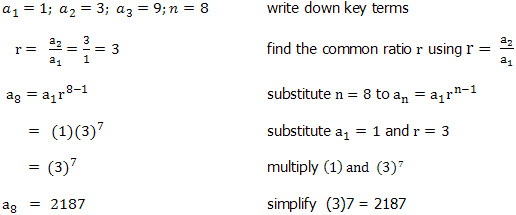
Finding the number of terms in a Geometric Progression
Question
Find the number of terms in the geometric progression 6, 12, 24, ..., 1536
Answer
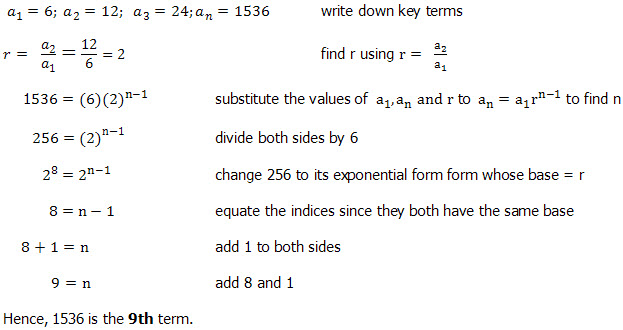
Finding the sum of a Geometric Series
Question
| Find the sum of each of the geometric series |
Answer
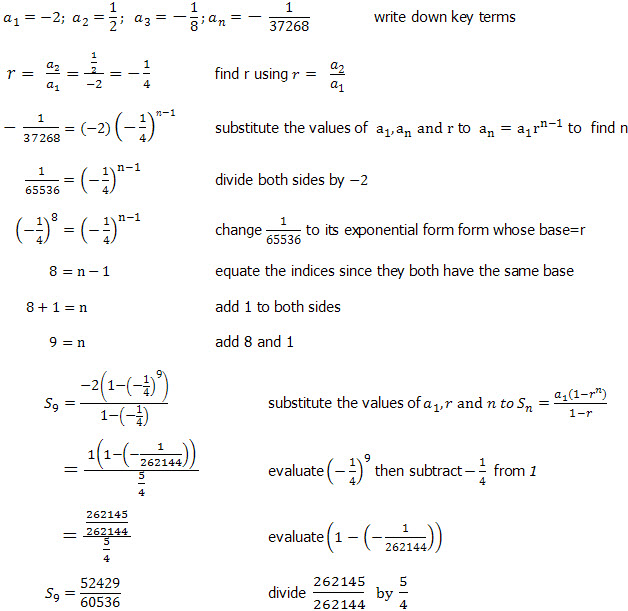
Finding the sum of a Geometric Series to Infinity
Question
![]()
Answer
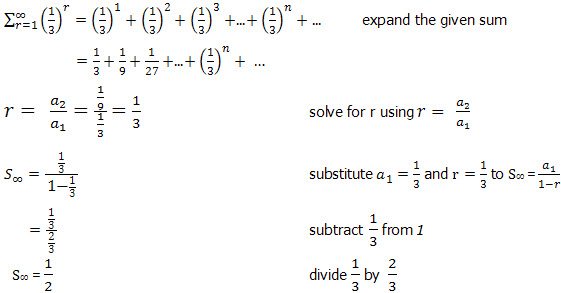
Converting a Recurring Decimal to a Fraction
Decimals that occurs in repetition infinitely or are repeated in period are called recurring decimals.
For example, 0.22222222... is a recurring decimal because the number 2 is repeated infinitely.
The recurring decimal 0.22222222... can be written as ![]() .
.
Another example is 0.234523452345... is a recurring decimal because the number 2345 is repeated periodically.
Thus, it can be written as ![]() or it can also be expressed in fractions.
or it can also be expressed in fractions.
Question
Express ![]() as a fraction in their lowest terms.
as a fraction in their lowest terms.
Answer
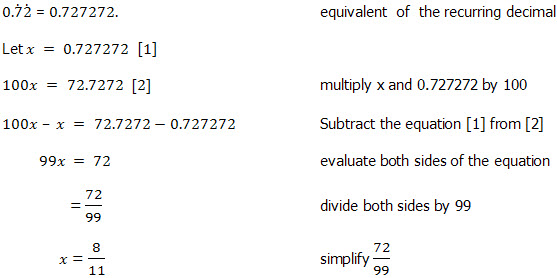
Go to the next page to start putting what you have learnt into practice.
